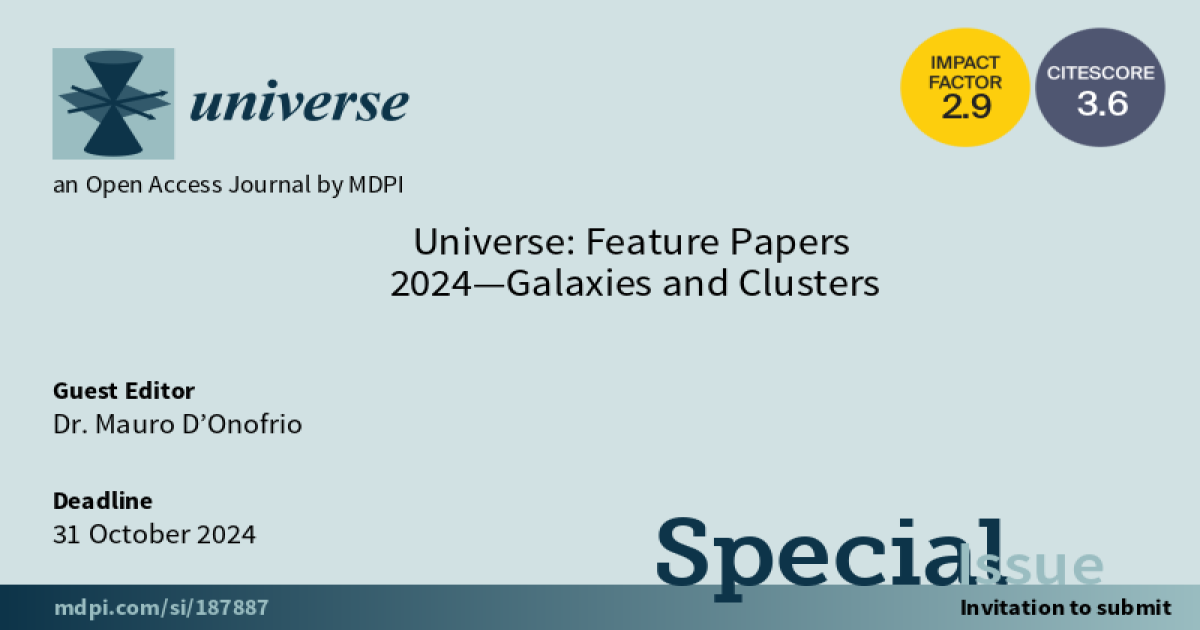Universe: Feature Papers 2024—"Galaxies and Clusters"
A special issue of Universe (ISSN 2218-1997). This special issue belongs to the section "Galaxies and Clusters".
Deadline for manuscript submissions: 31 October 2024 | Viewed by 2042

Special Issue Editor
Interests: galaxies: structure and evolution; galaxies: kinematics and dynamics; clusters: structure and evolution; active galactic nuclei; novae and supernovae
Special Issue Information
Dear Colleagues,
A new era of our knowledge of galaxies and clusters is opening today thanks to the new space/ground telescopes and the large deep surveys. New methods of data analysis are also in progress to manage this large flux of information.
This Universe special issue dedicated to "Galaxies and Clusters" aims to collect several research papers connected to such new observations of galaxies and clusters at all redshift as well as to the new invented methods used to reduce and analyze the data.
Dr. Mauro D’Onofrio
Guest Editor
Manuscript Submission Information
Manuscripts should be submitted online at www.mdpi.com by registering and logging in to this website. Once you are registered, click here to go to the submission form. Manuscripts can be submitted until the deadline. All submissions that pass pre-check are peer-reviewed. Accepted papers will be published continuously in the journal (as soon as accepted) and will be listed together on the special issue website. Research articles, review articles as well as short communications are invited. For planned papers, a title and short abstract (about 100 words) can be sent to the Editorial Office for announcement on this website.
Submitted manuscripts should not have been published previously, nor be under consideration for publication elsewhere (except conference proceedings papers). All manuscripts are thoroughly refereed through a single-blind peer-review process. A guide for authors and other relevant information for submission of manuscripts is available on the Instructions for Authors page. Universe is an international peer-reviewed open access monthly journal published by MDPI.
Please visit the Instructions for Authors page before submitting a manuscript. Submitted papers should be well formatted and use good English. Authors may use MDPI's English editing service prior to publication or during author revisions.
Keywords
- galaxies and clusters
- galaxy formation and evolution
- the structure of galaxies
- dwarf galaxies
- star formation in galaxies
- galaxy clustering
- the halo of galaxies
- galaxy satellites
- dark matter in galaxies
- lensing of galaxies
- deep surface brightness images
- galaxy counts
- machine learning and artificial intelligence for galaxy/cluster analysis





